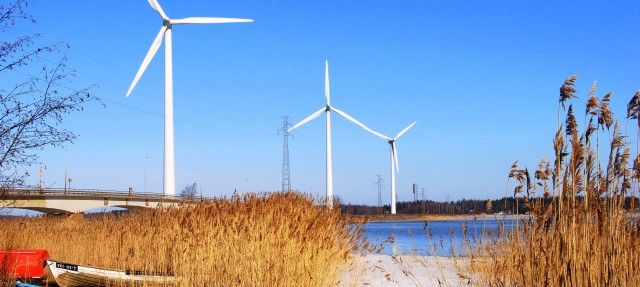Thermal power stations in the Nordic are having a tough time turning a profit due to the introduction of a new form of renewable technology in the area: wind power.

Gas and coal-fired turbines in Finland and Denmark were previously set up to act as swing-producers for the purpose of helping meet demand when hydropower production in Sweden and Norway fell due to drought.
The introduction of wind power technologies in the area has made this role less relevant. In fact, the level of efficiency with which wind is providing the area with power has proven so resourceful that it’s begun to drive the cost of electricity in the area down (which, in turn, has begun to cut into the profit margins of fossil power stations).
“Demand for coal condensing power in the Nordic power market has decreased as a result of the economic recession and the drop in the wholesale price for electricity,” state-controlled Finnish utility Fortum said, which just got his with an impairment loss of about 25 million euros ($31.67 million).
“The Nordic system price will likely more often clear well below the production cost for coal fired power production,” added Marius Holm Rennesund Oslo-based consultancy THEMA. “This will, in our view, result in mothballing of 2,000 MW of coal condensing capacity in Denmark and Finland towards 2030,” he added.
Experts suggest that additional wind power technology added to the area could see power prices drop towards the 20 euros per MWh mark, roughly the same cost for nuclear reactors.
Naturally, this is all part of a plan. At present, Denmark and Finland have over 10,000 MW of coal, gas, and oil-fired power generating utilities in place. The local governments want to do away with these stations in the region in favor of renewable resources like wind.
Specifically, Denmark wants to phase all coal use out by 2030, and generate all power and heat from renewables by 2035. Sweden, meanwhile, already has wind power utilities set up that meet 8% of total consumption. From 2010 to 2014, the country has doubled its capacity to about 5,000 MW, and predicts to see this number rise to 7,000 MW by 2017. And in Norway, the government recently announced that it will change tax rules in order to catch up with Sweden.
And the great thing about all of this—it’s actually beginning to work.
Naturkraft, a joint utility shared between Norway’s Statoil and Statkraft, said it would shut its 420 MW gas-fired power plant in January. Earlier this year, Finish utility Fortum closed its 695 MW Inkoo coal-fire power plant. And in Sweden, Vattenfall announced in May that it would close down its 409 MW coal-fired Fyn power plant (located in Denmark) by May 2016.
What’s more, this shift towards renewable technologies has had an effect on another area beyond the Nordics: the Baltic Region. You see, the grids for the two areas are integrated with one another, and as a result power sales are beginning to drop there too. For instance, in Estonia, energy group Eesti Energia saw power sales dropped 30% during the first half of the year. Additionally, cheaper power imports from the Nordics have driven down Eesti Energia’s profit margin to just 12 euros per MWh in the second quarter.
And in Lithuania, which expects to have a 700 MW interconnection to Sweden set up by the end of 2015, the government announced it would be shutting 900 MW of gas-fired capacity by 2016 due to negative margins.
Via Reuters
Advertisement
Learn more about Electronic Products Magazine





